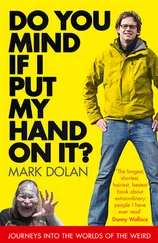Robert Monroe - Journeys out of the body, Practical Guidebook
Здесь есть возможность читать онлайн «Robert Monroe - Journeys out of the body, Practical Guidebook» весь текст электронной книги совершенно бесплатно (целиком полную версию без сокращений). В некоторых случаях можно слушать аудио, скачать через торрент в формате fb2 и присутствует краткое содержание. Жанр: Старинная литература, на английском языке. Описание произведения, (предисловие) а так же отзывы посетителей доступны на портале библиотеки ЛибКат.
- Название:Journeys out of the body, Practical Guidebook
- Автор:
- Жанр:
- Год:неизвестен
- ISBN:нет данных
- Рейтинг книги:5 / 5. Голосов: 1
-
Избранное:Добавить в избранное
- Отзывы:
-
Ваша оценка:
- 100
- 1
- 2
- 3
- 4
- 5
Journeys out of the body, Practical Guidebook: краткое содержание, описание и аннотация
Предлагаем к чтению аннотацию, описание, краткое содержание или предисловие (зависит от того, что написал сам автор книги «Journeys out of the body, Practical Guidebook»). Если вы не нашли необходимую информацию о книге — напишите в комментариях, мы постараемся отыскать её.
Journeys out of the body, Practical Guidebook — читать онлайн бесплатно полную книгу (весь текст) целиком
Ниже представлен текст книги, разбитый по страницам. Система сохранения места последней прочитанной страницы, позволяет с удобством читать онлайн бесплатно книгу «Journeys out of the body, Practical Guidebook», без необходимости каждый раз заново искать на чём Вы остановились. Поставьте закладку, и сможете в любой момент перейти на страницу, на которой закончили чтение.
Интервал:
Закладка:
A practitioner may run, roll on the floor, perform gymnastics, or move the arms and legs. Maximum activity and aggression are paramount to the successful use of this technique.
If the practitioner is stuck in a dark space, waving the arms and legs from side to side is appropriate. If the practitioner is in water, swimming with determined, powerful strokes would be suitable recourse. The type of action very much depends on the specific situation along with an aggressive desire on the part of the practitioner.
As a rule, the effect of such movements and relocations comes quite quickly, especially if attention is focused on all the accompanying sensations.
Imagining reality
This interesting technique should be used by experienced practitioners, or if all other deepening techniques fail.
A practitioner aggressively imagines being located in the physical world, experiencing its intrinsic reality of perception, and not in the phase. This should be done while in a state of separation from the body with a sense of vision present. If successful, the surrounding phase space will immediately brighten and sensory perception of the phase will exceed the normal experience of reality.
If this technique produces no clear results after a few seconds, another technique should be used.
GENERAL ACTIVITY
All deepening techniques should be practiced with a high level of aggression, with no pauses, only continuous, deliberate action. If techniques are practiced in a calm, relaxed manner, then deepening attempts will most often result in falling asleep or returning to the body.
TYPICAL MISTAKES DURING DEEPENING
• Forgetting to perform deepening techniques when necessary.
• Carrying out unnecessary deepening while at a sufficient depth.
• Halting deepening techniques before reaching maximum realism in the phase.
• Carrying out main deepening techniques prior to having become completely separated from the body, although at this time only primary deepening should be used.
• Continuing deepening techniques when results have already been achieved.
• Alternating too quickly between deepening techniques instead of concentrating on each of them for at least five to 10 seconds.
• Performing the techniques slowly and calmly instead of aggressively.
• Applying techniques of sensory amplification while stuck in a shapeless, dark space when these should only be performed in a vivid and realistic place.
• Observing objects located too far from the eyes during visual sensorization instead of the required four to five inches.
• When peering, scrutinizing a single detail of an object for too long when it is necessary to quickly switch from one detail to another.
• Taking in a whole object when peering while only parts of it should be observed.
• Concentrating too long on the details of a single object instead of focusing on different objects in quick succession.
• Long palpation of a single object during sensory amplification instead of rapidly switching from one object to another.
• Deepening while standing in place when it is important to maintain constant motion.
• Falling headfirst with the eyes open, although the eyes must be shut to avoid crashing into the floor.
• Falling headfirst without the desire or intention of falling far and quickly.
• Forgetting to use translocation techniques after hitting a dead end.
• Forgetting to alternate deepening techniques if some of them are not working.
• Fear of the hyperrealism of the experience and halting deepening instead of calmly continuing with the technique.
Exercises for Chapter 6
Questions
1. After which phase entrance techniques is deepening necessary?
2. Why is phase deepening necessary?
3. Are there cases where phase deepening is unnecessary?
4. What level of reality should be achieved by deepening?
5. When should deepening begin after entering the phase?
6. Does deepening influence the length of a phase experience?
7. Why is primary deepening necessary?
8. May one touch one’s head when the performing sensorization of feelings?
9. Should a practitioner look at curtains while peering?
10. Is it effective to apply peering at phase objects from a distance of 1 to 1.5 yards?
11. Can peering be used during palpation?
12. When should the eyes be closed while falling headfirst?
13. Would throwing punches like a boxer help a practitioner to deepen?
14. How calmly should the deepening techniques be performed?
Tasks
1. Devote the next three successful phases to perfecting deepening techniques, using all of the methods described in this chapter.
2. Using personal experience, try judging which technique suits you best from personal experience.
Chapter 7 - Maintaining
THE GENERAL CONCEPT OF MAINTAINING
Phase maintenance or “maintaining” refers to techniques that allow a practitioner to remain in the phase for the maximum amount of time possible. Without knowledge of “maintaining” techniques, the duration of the phase will be several times shorter than it could otherwise be. The shortest phases last just a few seconds. Beginning practitioners usually fear not being able to exit a phase; this shouldn’t ever be a concern because the real challenge is being able to maintain the phase state, which is easily lost unless phase maintenance techniques are used.
Phase maintenance consists of three primary principles: resisting a return to the wakeful state (known as a foul), resisting falling asleep, and resisting a false exit from the phase. As a rule, the first two problems (return to a wakeful state, or falling asleep) are often encountered by beginners, but the third difficulty (false exit) manifests at later stages of practice.
Resistance to returning to the body is self-explanatory, whereas resistance to falling asleep is unclear to many. Not everyone knows that almost half of phase experiences usually end in a quite trivial way - falling asleep. A person usually looses attentiveness, his or her awareness dissipates, and everything around gradually looses clarity and turns into what is for all intents and purposes a usual dream.
Resisting a false exit from the phase is a lot more surprising and dramatic. Sometimes a practitioner detects an impending exit from the phase, subsequent deepening techniques fail to work, resulting in what seems to be a return to the body and physical reality. Sure that the phase has ended, a practitioner may stand up and the fall asleep after perceiving a few steps. In such cases, falling asleep most often happens without any movement, but while still lying in bed. The problem is that the difference between the phase and reality can be so subtle that in terms of internal or external indicators, the phase practically can’t be distinguished from reality. Therefore, one must know the necessary actions to take in the event that the phase ceases, since the end of a phase could actually be a trick and purely imagined.
There are specific solutions for the three problems described in addition to general rules that apply to any phase experience. Studying these rules should be given just as high a priority as studying the specific solutions, since only some of them, when applied separately, may help one to remain in the phase several times longer than usual.
In some cases, techniques for maintaining are not applicable.
However, knowledge of how to maintain is useful for the majority of experiences. Also, there might be situations when someone need only resist a foul, while someone else may need to resist falling asleep. All of this is very specific to each case and can be determined only in practice.
Читать дальшеИнтервал:
Закладка:
Похожие книги на «Journeys out of the body, Practical Guidebook»
Представляем Вашему вниманию похожие книги на «Journeys out of the body, Practical Guidebook» списком для выбора. Мы отобрали схожую по названию и смыслу литературу в надежде предоставить читателям больше вариантов отыскать новые, интересные, ещё непрочитанные произведения.
Обсуждение, отзывы о книге «Journeys out of the body, Practical Guidebook» и просто собственные мнения читателей. Оставьте ваши комментарии, напишите, что Вы думаете о произведении, его смысле или главных героях. Укажите что конкретно понравилось, а что нет, и почему Вы так считаете.










